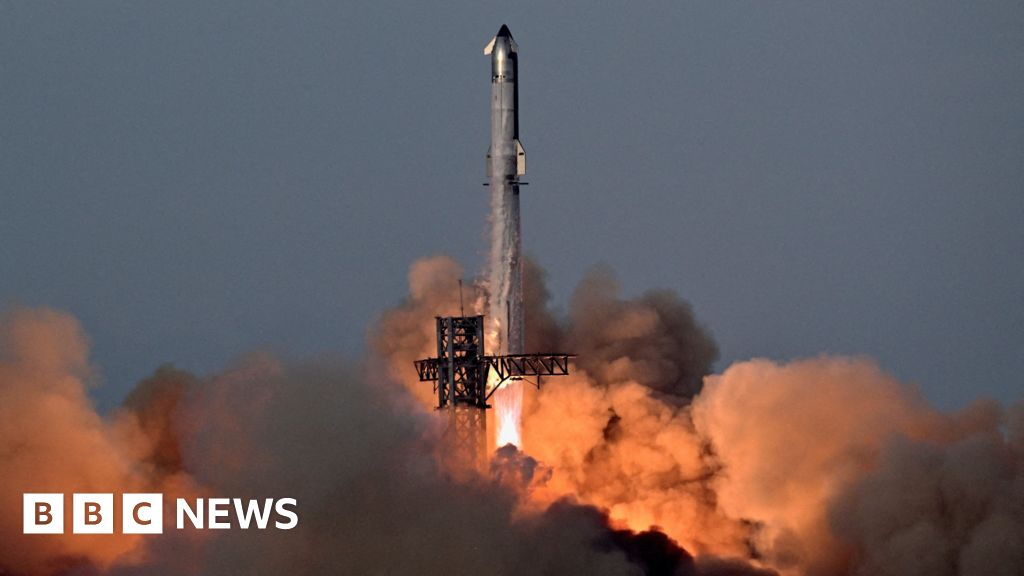SpaceX has pulled off a successful test flight of its newest generation rocket, Starship, reversing a trend of disappointing failures. The world's largest and most powerful rocket blasted off from Texas just after 18:30 local time (23:30 BST) for a nail-biting 60-minute flight.
Parts of the engine appeared to explode at one stage, and flaps on the side of the rocket caught fire and swung from side-to-side. U.S. space agency NASA plans to use Starship to send humans to the Moon for its ambitious Artemis program in 2027.
Great work by the SpaceX team!!, posted SpaceX CEO Elon Musk on X. After three previous launches resulting in failures this year and a rocket exploding on the launch pad in June, this success is particularly significant.
The flight showed promise from the start, as all of the booster's 33 engines fired up. After about seven minutes, the booster separated from the spacecraft and fell into the Gulf of Mexico. Starship continued to ascend, reaching a maximum height of almost 200km before coasting around the planet.
SpaceX has designed Starship as a fully reusable transport system capable of carrying people to the Moon and Mars. Despite the earlier setbacks, Elon Musk hopes to have the rocket certified for human travel as early as next year and aims to begin uncrewed flights to Mars within the next 12 months.
The latest launch was a much-needed success for SpaceX amid rising questions about its future and Musk's involvement in political matters. Starship, battered yet triumphant, represents a crucial step towards proving its capability for safe human spaceflight.
Parts of the engine appeared to explode at one stage, and flaps on the side of the rocket caught fire and swung from side-to-side. U.S. space agency NASA plans to use Starship to send humans to the Moon for its ambitious Artemis program in 2027.
Great work by the SpaceX team!!, posted SpaceX CEO Elon Musk on X. After three previous launches resulting in failures this year and a rocket exploding on the launch pad in June, this success is particularly significant.
The flight showed promise from the start, as all of the booster's 33 engines fired up. After about seven minutes, the booster separated from the spacecraft and fell into the Gulf of Mexico. Starship continued to ascend, reaching a maximum height of almost 200km before coasting around the planet.
SpaceX has designed Starship as a fully reusable transport system capable of carrying people to the Moon and Mars. Despite the earlier setbacks, Elon Musk hopes to have the rocket certified for human travel as early as next year and aims to begin uncrewed flights to Mars within the next 12 months.
The latest launch was a much-needed success for SpaceX amid rising questions about its future and Musk's involvement in political matters. Starship, battered yet triumphant, represents a crucial step towards proving its capability for safe human spaceflight.





















